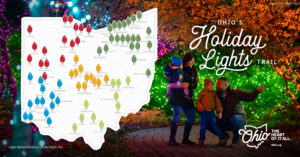Know Before You Go: Travel Safety Tips for Your Thanksgiving Holiday

 The Thanksgiving week ahead is one typically filled with travel, a busy schedule and potentially bad weather.
The Thanksgiving week ahead is one typically filled with travel, a busy schedule and potentially bad weather.
“Don’t let this hectic time of year sidetrack you from safety on the road,” said FEMA Region V Administrator Andrew Velasquez III. “Take some time now to talk to your family about how to handle a travel emergency, and stockpile necessary supplies in your car in case you become stranded.”
Remember to take these simple steps to help ensure safe travel for you and your family:
Know the risks before leaving home. Listen to the radio or television for the latest weather forecasts and road conditions. If bad weather is forecast, drive only if absolutely necessary.
Keep your gas tank above half-full. When temperatures are extremely cold, condensation can build up in a near-empty gas tank, potentially freezing fuel lines and leaving you stranded.
Check or have a mechanic check the following items on your vehicle:
Antifreeze levels – ensure they are sufficient to avoid freezing. You should be checking these at least twice a year, but ensure you check them before leaving too.
Brakes – check for wear and fluid levels. Low fluid levels can have an effect on the brake pads, which are essential. This may mean the brakes don’t work properly and that you won’t be able to stop while driving, which is potentially dangerous.
Exhaust system – repair as necessary. Carbon monoxide is deadly and usually gives no warning. Something to always check for in the exhaust system is the catalytic converter. If it’s not working efficiently, ensure you replace it immediately. You can sell your old ones to companies like Converter Guy, who will pay generously to recycle the metals from the device.
Fuel and air filters – replace as needed.
Battery and ignition system – make sure they’re clean and functioning properly. Batteries can sometimes die which will leave you stranded, so it’s important to get this checked. If there’s something problematic about the ignition system, there are a range of issues that could be the cause.
Heater and defroster – ensure they work properly. After all, you can’t drive with ice clogging your windscreen, and you certainly don’t want to be driving in your coat!
Lights and flashing hazard lights – check for serviceability. These are very important as if an accident does occur, you need to ensure that other drivers can see you clearly.
Thermostat – ensure it works properly.
Windshield wiper equipment – repair any problems and maintain proper washer fluid level.
Install good winter tires – make sure the tires have adequate tread.
Have an emergency supply kit for your car in case it’s needed. Include the following items:
Jumper cables – consider including flares or reflective triangles
Flashlights – with extra batteries
First aid kit – remember any necessary medications, baby food or diapers
Food – non-perishable food such as canned food, and protein rich foods like nuts and energy bars
Manual can opener
Water – at least 1 gallon of water per person a day for at least 3 days
Basic toolkit – pliers, wrench, screwdriver
Radio – battery or hand cranked
Cat litter or sand – for better tire traction
Shovel
Ice scraper
Clothes – warm clothes, gloves, hat, sturdy boots, jacket and an extra change of clothes for the cold
Blankets or sleeping bags
Charged cell phone – and car charger
Pet supplies – food and water
You can always find valuable information to help you prepare for winter at www.ready.gov/winter-weather, and click here to watch our video on preparing your car for weather emergencies. Bookmark FEMA’s mobile site http://m.fema.gov, or download the FEMA app today to have vital information just one click away.
FEMA’s mission is to support our citizens and first responders to ensure that as a nation we work together to build, sustain, and improve our capability to prepare for, protect against, respond to, recover from, and mitigate all hazards.









